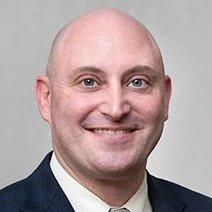A new study has found further evidence linking hits to the head rather than concussions to the onset of chronic traumatic encephalopathy, the neurodegenerative disease traced back to the kind of head trauma experienced by football players, other athletes and combat veterans.
“The concussion is really irrelevant for triggering CTE,†Dr. Lee Goldstein, an associate professor at Boston University School of Medicine and College of Engineering, and a corresponding author of the study, told The Post. “It’s really the hit that counts.
“Although that’s the headline, this is the best scientific evidence to date, in fact some of the only scientific evidence, that we have that that’s so. . . . This is the first really solid evidence that we have where we have controlled experiments where we can make that case very strongly and convincingly.â€
The study, led by Boston University researchers and published Thursday in Brain, a peer-reviewed journal of neurology, analyzed the brains of teenagers with head injuries and used mice to recreate head trauma, revealing more about the origins of CTE and its relationship to traumatic brain injuries (TBI), concussions and subconcussive head injuries.
“The same brain pathology that we observed in teenagers after head injury was also present in head-injured mice. We were surprised that the brain pathology was unrelated to signs of concussion, including altered arousal and impaired balance, among others. Our findings provide strong causal evidence linking head impact to TBI and early CTE, independent of concussion,†Goldstein said. “The results may explain why approximately 20 percent of athletes with CTE never suffered a diagnosed concussion.â€
The study’s findings extend beyond athletics and the military.
“There are many vulnerable populations at greatly increased risk of repetitive head injury including domestic abuse, incarcerated populations, homeless,†Goldstein said. “It’s a big problem for the NFL, a bigger problem for amateur athletics and an even larger problem still for the greater public.â€
When it comes to head injuries and CTE, Goldstein spoke of three categories that are being jumbled: concussions, TBI and CTE. Concussion, he says, is a syndrome defined “by consensus really every couple of years, based on the signs and symptoms of neurological syndrome, what happens after you get hit in the head. It’s nothing more than that, a syndrome. You take one [symptom] from column A, one from column B.â€
A TBI is different. “it is an injury, an event,†he said. “It’s not a syndrome. It’s an event and it involves damage to tissue. If you don’t have a concussion, you can absolutely have brain injury and the converse is true.â€
CTE is “a bona fide neurodegenerative disease. It will progress independently of whether you have future hits and a lot of people think that the injury is the disease and it’s not. There is an injury and then it goes on to spread in the brain, like other neurodegenerative diseases.â€
Which means that the focus on concussion doesn’t prevent the development of CTE.
“My analogy for this is it’s like having health officials focus on the hacking cough in smokers rather than the lung cancer,†Goldstein said. “A cough can be related to smoking — there can be many other causes of a cough. But the fact that you have or do not have a cough is irrelevant to whether you have cigarette-caused lung cancer. . . . It’s the same with chest pain and a heart attack. We would no more rely on chest pain to be the single indicator of whether you’ve had a heart attack.
“So concussion may or may not be a TBI and equally important not having a concussion may or may not be associated with a TBI. A concussion doesn’t tell you anything about a TBI. Nor does it tell you anything about CTE.â€
The cumulative effect of smaller hits is something that Goldstein and Dr. Ann McKee and others labeled “the bobblehead effect†in a 2012 paper on blast neurotrauma in the military. That effect is, Goldstein says, “the injury on top of the injury, on top of the injury†and it means that the focus on concussion protocol, while important, may not prevent CTE. Concussion, according to Goldstein, is “a minor subset of all hits.†The vast majority are subconcussive, which the Concussion Legacy Foundation says are below the concussion threshold: “the brain is shaken, but not so violently that the damage to brain cells is severe.†Those are the ones to worry about, especially in young people.
The researchers in the new study looked at the brains of four teenage athletes who had sustained closed-head impact injuries anywhere from one to 128 days before death and found the results particularly alarming. Two were 18 and two 17; two died by suicide. One died suddenly 10 days after the second of two sports-related head injuries, the fourth succumbed after sustaining three sports-related concussions (26 days, 6 days and the day before death.) The last concussion came during a football game in which the player absorbed a hard tackle and landed on his helmet. Analysis of their brains showed a range of post-traumatic pathology that included one case of early-stage CTE and two cases with abnormal accumulation of tau protein, a CTE marker typically found in small blood vessels in the brain.
“You get hit the first time and a minute later you get hit again. We learned that from blasts because those happen in milliseconds. In football, it happens in minutes, tens of minutes or over a day or week. But the cumulative effect, when the brain is not fully healed, particularly in younger people, is really, really damaging,†Goldstein said, “and that’s the problem. You won’t see it by focusing on concussion. In fact it’s guaranteed that you won’t see it.
“Ultimately, being active, getting outside, playing sports, particularly team sports, is important. There are also concerns about the risks involved in playing sports, including football, which is why it has been encouraging to see similar developments at the youth level such as the certification of over 130,000 youth and high school coaches through USA Football’s Heads Up program; USA Football’s National Practice Guidelines — including limits on full contact; Pop Warner’s initiatives, from no intentional head-to-head contact to requiring players who suffer a suspected head injury to receive medical clearance from a concussion specialist before returning to play; and 50 states have a Return to Play law, which can help reduce the rates of recurrent concussions. We hope that all youth sports will continue to take measures to reduce head contact through similar rules changes, education and improved protective equipment.â€

